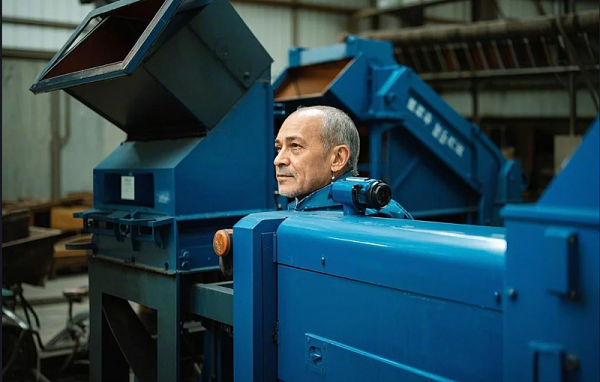
**Tips for Using Products to Clean Recycled Plastic**
**Introduction**
Recycled plastic cleaning is a crucial step in the plastic recycling process. It ensures that the plastic waste is ready for further processing, such as shredding, pelletizing, or even turning it back into new products. Effective cleaning can improve
the overall quality of the recycled plastic, making it more valuable and usable. This article will explore various tips for using products designed to clean recycled plastics, aiming to enhance your recycling efforts with optimal results.
**The Importance of Cleaning Recycled Plastic**
Before diving into the practical tips, it's essential to understand why cleaning recycled plastic is vital. Cleaning removes contaminants, such as dirt, labels, adhesives, and residues from the original usage of the plastic materials. Proper cleaning
helps:
1. Ensure high-quality output.
2. Reduce the risk of contamination in recycled products.
3. Improve the efficiency of recycling processes.
4. Lower environmental impacts by reducing the waste of unrecyclable contaminants.
**Choosing the Right Cleaning Products**
Selecting appropriate cleaning agents and tools is the first step toward effective recycled plastic cleaning. Consider the following factors when choosing these products:
1. **Type of Plastic:** Different types of plastic (e.g., PET, HDPE, PP, LDPE) might require different cleaning approaches. Ensure the product is suitable for the specific type of plastic you are dealing with.
2. **Level of Contamination:**
Evaluate how dirty the plastic waste is. Heavily soiled plastics may need stronger cleaning agents or additional pre-treatment steps.
3. **Environmental Impact:** Opt for eco-friendly cleaning products that reduce harmful environmental impact. Biodegradable
and non-toxic solutions are preferred.
4. **Efficiency and Cost:** Balancing efficiency and cost is crucial. High-quality products may initially cost more but can save time and resources in the long run.
**Pre-Treatment Methods**
Pre-treatment of recycled plastics is often necessary to facilitate easier cleaning. Here are some effective pre-treatment techniques:
1. **Sorting:** Properly sort plastic waste to streamline the cleaning process. Separate plastics by type, color, and degree of contamination.
2. **Shredding:** Shredding plastic waste into smaller pieces enhances the penetration of cleaning
agents and improves the overall cleaning efficiency.
3. **Soaking:** Soak heavily contaminated plastic in a water bath or cleaning solution for a determined period. This presoak loosens dirt, adhesives, and other residues.
**Cleaning Techniques**
Once pre-treatment is completed, applying the right cleaning techniques is key to achieving pristine recycled plastics. Here are some methods:
1. **Manual Cleaning:**
- Use brushes, scrapers, and cloths to manually remove stubborn dirt and residues.
- Employing warm water can improve the effectiveness of manual cleaning.
2. **Mechanical Cleaning:**
- Utilize washing machines specifically designed for plastic recycling. These machines often have powerful jets and rotating drums to enhance cleaning.
- Ultrasonic cleaning baths can effectively remove fine
contaminants through high-frequency sound waves.
3. **Chemical Cleaning:**
- Use cleaning agents specially formulated for plastics. Alkaline and acidic cleaners can help remove organic and inorganic contaminants.
- Rinse thoroughly after chemical cleaning to ensure no residues stay
on the plastic material.
**Drying Recycled Plastic**
Proper drying after cleaning is essential to prevent the growth of molds and mildew. Here are some drying tips:
1. **Air Drying:** Spread the cleaned plastic pieces in a well-ventilated area. Use fans to expedite the drying process.
2. **Towel Drying:** For small quantities, manually dry plastic pieces with towels to ensure all moisture is removed.
3. **Mechanical Drying:** Employ drying machines if available. These machines use hot air or centrifugal force to quickly dry large batches of cleaned plastics.
**Quality Control**
Implementing strict quality control measures ensures that the cleaned recycled plastic meets the required standards:
1. **Inspect Thoroughly:** Check the plastic pieces after cleaning to ensure no contaminants are left behind.
2. **Sample Testing:** Conduct tests on a sample of the cleaned plastic for any residual contaminants to ensure the cleaning agents
used are effective.
3. **Documentation:** Keep records of the cleaning process and the condition of the plastics before and after cleaning. This helps in identifying trends and areas for improvement.
**Safety Precautions**
When cleaning recycled plastics, safety precautions should not be overlooked:
1. **Personal Protection Equipment (PPE):** Wear gloves, goggles, and masks to protect yourself from chemicals and contaminants.
2. **Ventilation:** Ensure the workspace is adequately ventilated, especially when using chemical cleaners.
3. **Handling Chemicals:** Follow the manufacturers’ instructions while handling cleaning agents. Store chemicals safely and out of reach of children.
**Conclusion**
Cleaning recycled plastic effectively is crucial for the success of recycling operations. By following the tips outlined in this article, you can ensure high-quality, contaminant-free recycled plastics. From choosing the right cleaning products
and pre-treating plastic waste to applying optimal cleaning techniques and adhering to safety precautions, each step is integral to achieving pristine results. Adopting these practices not only improves the recycling process but also contributes to environmental
sustainability by promoting the reuse of plastics.
**References**
For further reading on the cleaning and recycling of plastic, the following sources can be helpful:
1. [Environmental Protection Agency (EPA) Guidelines](https://www.epa.gov/)
2. [Journal of Plastic Recycling](https://www.journalofplasticrecycling.com/)
3. [Manufacturers' Instructions for Cleaning Agents](https://www.cleaningagentsmanufacturers.com/)
By integrating these tips into your recycling process, you enhance the quality and efficiency of recycled plastics, contributing to a more sustainable future.

 **Tips for Using Products to Clean Recycled Plastic**
**Tips for Using Products to Clean Recycled Plastic**